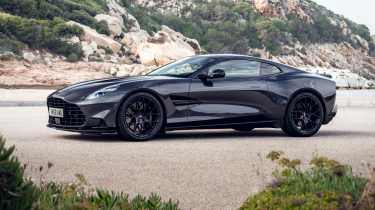Everyone loves the idea of a GT car, so why does nobody buy them?
We all love a great GT, says Jethro. Trouble is, no-one wants to buy them

Nailing the perfect GT car seems just about the most impossible task in all of motoring. We all love GTs, don’t we? Or at least the idea of them. Elegant, sophisticated, quietly powerful, possessed of vast power from mighty, big-cube engines and capable of easing away all the mundane troubles that life can deliver. A great GT makes you feel special when you catch sight of it, as you slip into its sumptuous cabin, when its engine wraps you up in its cultured sound and when it’s spearing across vast distances. A great, unstoppable force granting freedom and escape. Oh, plus it’d be cool if it turns into a sports car when your mood and the road demands it. And rides like a Citroën DS on a road paved with fluffy cartoon clouds.
We’re not asking much, then. I guess it’s possible to nail this far-reaching brief. Maybe. But even if a manufacturer finds that most elusive of magic formulas, it’s likely that it still won’t quite be enough. You see, the GT – the true gran turismo – is a fantasy. Literally. Anyone who’s read car magazines or is just steeped in all things motoring has a wistful notion of floating down to the south of France (it’s always the south of France), gently cruising beside the shimmering Med with an impossibly glamorous partner and then, later, screaming up and down the Route Napoléon with Loeb-like car control.
> Aston Martin Vanquish review - Britain’s Ferrari 12 Cilindri rival
Plus, we want our GT to have certain qualities and ingredients. Ideally it should be front-engined and rear drive. It should have a V12 wherever possible. It should be restrained but beautiful and imposing. Not too showy, mind, yet palpably expensive. Sounds about right, doesn’t it? And irresistible. The reward for making this fantasy come true – or even getting close – must be unimaginable riches and staggering success.
Only… erm, nobody seems to actually want a GT. They come and go. Some stick around for years selling in tiny numbers. Manufacturers who built their entire business on the dream of the GT stumble from one financial crisis to the next. While supercars and hypercars go from strength to strength, the GT has moments of hope, quickly followed by reality setting in and sales bubbling away at the bottom of a chart. If the definition of madness is continuing to do the same thing and expecting a different result, then the car industry is truly, unwaveringly insane. None of us can quite let go of the dream.
It seems that Aston Martin has recognised this inescapable truth. It devised the Valkyrie partly to leverage a relationship with Red Bull and make a healthy profit along the way (something its GTs have mostly failed to deliver). But the project really made sense as a perception changer – to make people think an Aston could be a proper Ferrari-rivalling supercar – before unleashing a new range of mid-engined cars. AM has also shifted its current range more towards a hardcore, sporty brief. Even the DB12, a GT archetype in many ways, is now pitched as a super-tourer.

If you can get beyond lines like ‘Cutting through continents, bruising benchmarks and taming tradition’ or ‘Wrapping every corner in hand-stitched hedonism’ on the website, I think the new billing means a GT-shaped car that’s far sharper-edged and more supercar‑y. And so it turned out. The DB12 has been praised for its body control, massive performance and agility but, here comes the irony, it's just a bit too highly strung to be a GT. The criticism makes perfect sense because we all love a GT. It’s just that nobody wants to buy one.
Perhaps the problem is that sports cars and supercars have become too good at being GTs. It’s an easier trick to make something light and agile ride well, have great functionality and feel tinged with luxury than to give a 1800kg front-engine, rear-drive monster the responses and traction of a sports car. As ever, the 911 is almost impossible to ignore. Then factor-in how wonderfully comfortable a 296 GTB or McLaren 750S can be over long distances and the big, heavy GT car looks vaguely untenable. Even Ferrari has basically given up on GTs. The 12 Cilindri does admittedly have a softer edge, but the 812 Superfast was madder than any mid-engined supercar you care to name and Ferrari’s real GT is now an SUV. Yeah, those things. Another nail in the GT coffin.
I sincerely hope that the industry continues its madness. Every single GT, from the wacky, glorious, poor-selling Lexus LC500 to the intriguing, glamorous, poor-selling Maserati GranTurismo makes the world a better place and keeps the dream of simpler times and sunny days in Cannes alive. And the magic of a huge, heavy car that has scintillating dynamics and eats continents for breakfast can be made real. About once in a generation. Unfortunately, BMW nabbed that opportunity with the unlikely but outrageous M5 CS. It’s the best GT I’ve driven for years, even though it happens to be a saloon car.
This story was first featured in evo issue 318.



